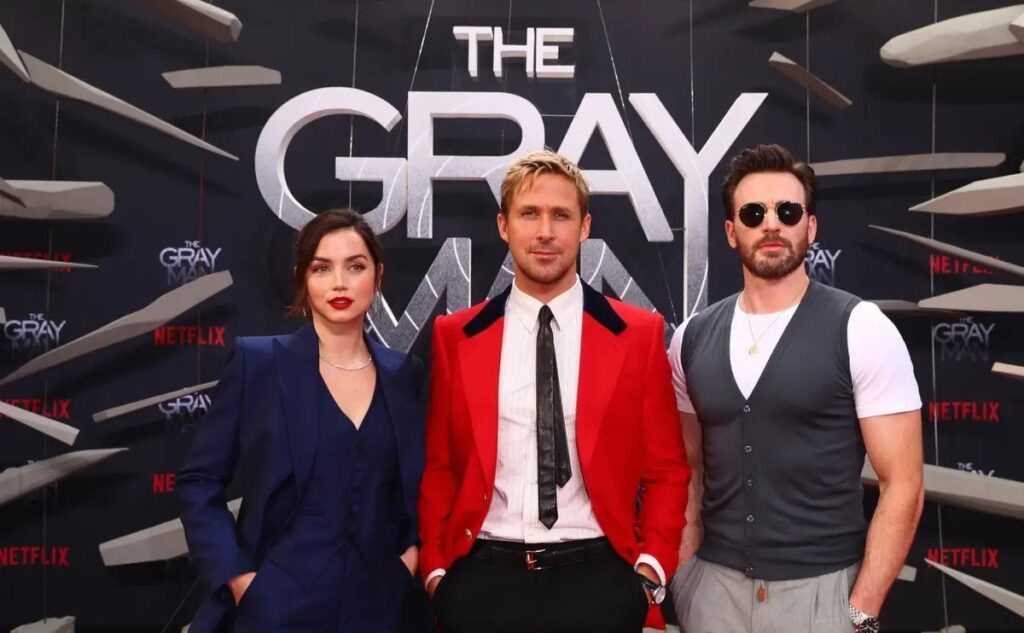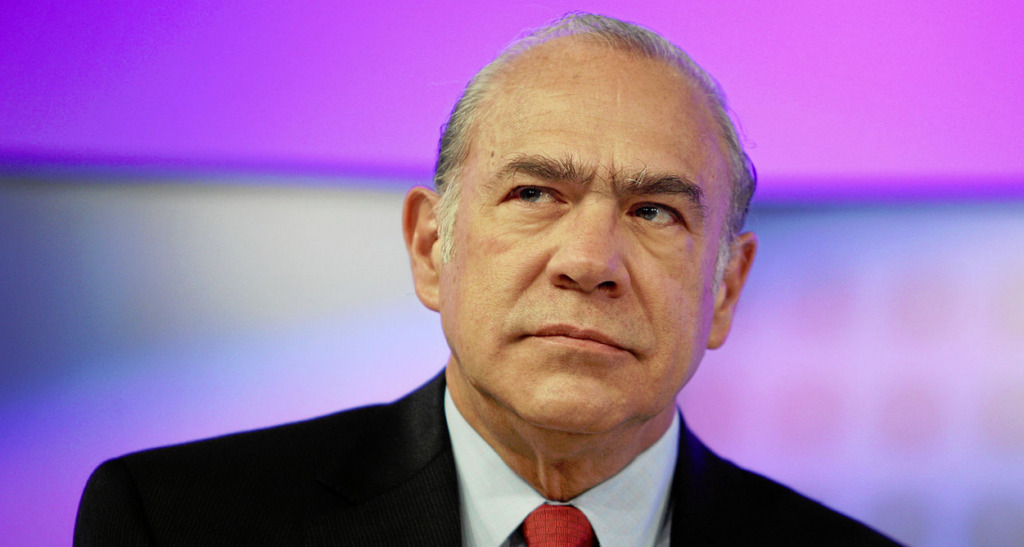A region whose presence in the Western media landscape has been close to nonexistent, the Caucasus rarely finds itself the subject of the U.S. entertainment industry. However, a rather unsettling surprise greets viewers upon viewing Netflix’s recent spy action film, The Gray Man, featuring A-list actors like Ryan Gosling, Chris Evans and Ana de Armas.
Azerbaijan, one of the least-free countries in the world whose human rights record can be considered deplorable at best, is featured prominently as the setting for a sizable portion of the plot. Released earlier this summer, the Netflix original follows the story of CIA agent “Sierra Six,” played by Ryan Gosling, who uncovers corrupt secrets about his superior and triggers a global manhunt after him.
Within the first thirty minutes of the film, the words “Baku, Azerbaijan” fill up the screen in bold silver letters against the backdrop of a shimmering Baku skyline. Several minutes later, the cameras pan over a large Azerbaijani flag, featured front and center in a military funeral alongside Azerbaijani soldiers, flags and — interestingly — a Russian Orthodox priest leading the service (Azerbaijan is a majority-Muslim country).
The scene, pun not intended, looks like it’s straight out a movie. Only, if the movie was an advertisement for oil-rich, dictatorial countries with something to hide.
Notably, the scenes set in Baku are not filmed in Azerbaijan, but in the Czech Republic. Azerbaijan’s unmistakable Flame Towers, the three skyscrapers that have come to symbolize its rather sudden climb to wealth, are added into the scenes set in Baku with computer-generated imagery (CGI).
The release of the film comes one year after Azerbaijan announced a partnership with Netflix, the world’s leading streaming platform.
The prominent incorporation of Baku as the setting for a sizable portion of the plot is particularly important when contextualized alongside Azerbaijan’s infamous black caviar diplomacy — source of the “biggest corruption scandal in the history of the Council of Europe,” according to the European Stability Initiative — and overarching human rights whitewashing strategy.
The film merely features the shimmering Baku skyline without bringing any known revenue to the country or creating local job opportunities, indicative of a broader whitewashing agenda at hand. One may argue it creates the impression of a paid promotion that Netflix loaned its ad space to.
The concept is even more troubling when considering Azerbaijan’s atrocious human rights record, which deteriorates every year. Azerbaijan not only continues to severely and violently repress its own citizens’ fundamental human rights, but as recently as 2020, it also launched an ethnic cleansing campaign against the civilian population of the autonomous Nagorno Karabakh region. Azerbaijan has since openly invaded neighboring Armenia, following Russia’s footsteps in its war against neighboring Ukraine.
It is therefore imperative that influential media companies do not give a platform to countries like Azerbaijan, as promotion in an implicitly positive light without additional context will directly benefit the brutal dictator in power and his clan. This will in turn fuel human rights violations and put vulnerable people further at risk.
Regarding the cooperation with Netflix, perhaps foreshadowing this turn of events, Azerbaijani Culture Minister Anar Karimov expressed last year his intentions to “fully demonstrate the film potential of Azerbaijan to the world,” emphasizing the importance of Russia, a close partner of Azerbaijan, in this process, as well. It appears Azerbaijani investments in soft power are now materializing.
Despite being one of the most expensive films Netflix has produced, The Gray Man has not fared well with critics and audiences. However, it now retains the ranking of #1 Netflix film of the year and #4 of all time.
Meanwhile, other countries in the region have also made significant headway in Hollywood. For instance, the 2021 film Fast and Furious 9 was filmed, in part, on the streets of Tbilisi, Georgia, generating buzz in the country and receiving praise from Georgian authorities, who took credit for the development. The project generated nearly $10 million for the country and created hundreds of local jobs.
Unlike its two South Caucasus neighbors, Armenia has yet to make such progress in the international film industry.
For instance, the 2016 film The Promise, a story about the Armenian Genocide, was temporarily available on Netflix and was celebrated by Armenian communities worldwide. However, an influx of negative reviews, allegedly orchestrated by genocide deniers, immediately tanked the film’s ratings.
Looking forward, while each country pursues its own spotlight on the international media stage, Azerbaijan continues seeking new avenues to consolidate dictatorial power in the Aliyev clan’s bloody hands and whitewash its human rights record internationally.
When human rights concerns arise, however, it is up to media companies and the agency of their consumers to act responsibly and consciously in light of the global implications they perpetrate.







